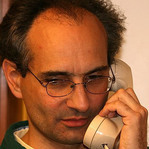LTM users, its time to stand up and be counted!
-
Recently Browsing 0 members
- No registered users viewing this page.
-
Similar Content
-
- 17 replies
- 883 views
-
- 21 replies
- 30,005 views
-
- 17 replies
- 619 views
-
- 3 replies
- 344 views
-
- 12 replies
- 624 views
-




Recommended Posts
Join the conversation
You can post now and register later. If you have an account, sign in now to post with your account.
Note: Your post will require moderator approval before it will be visible.